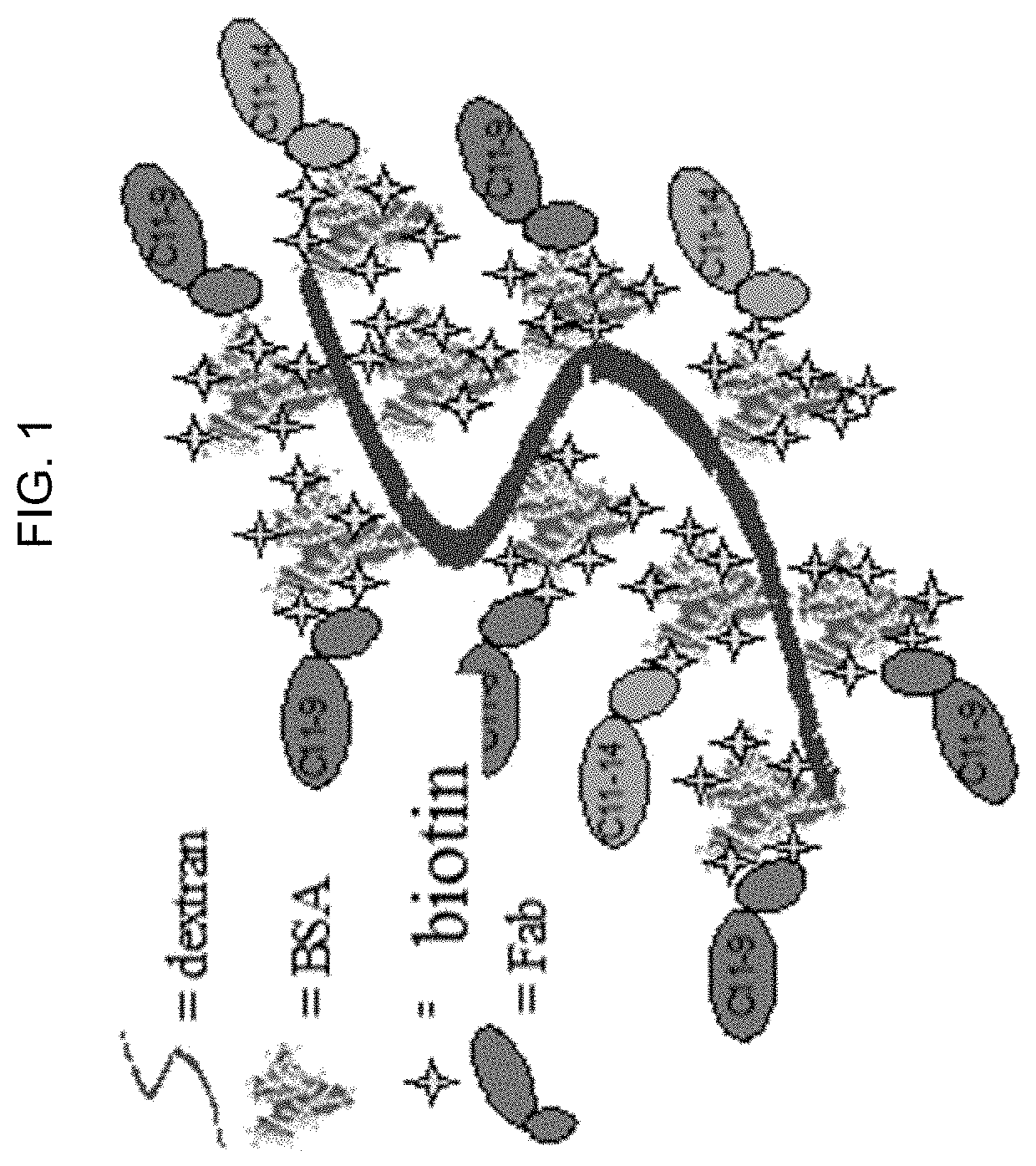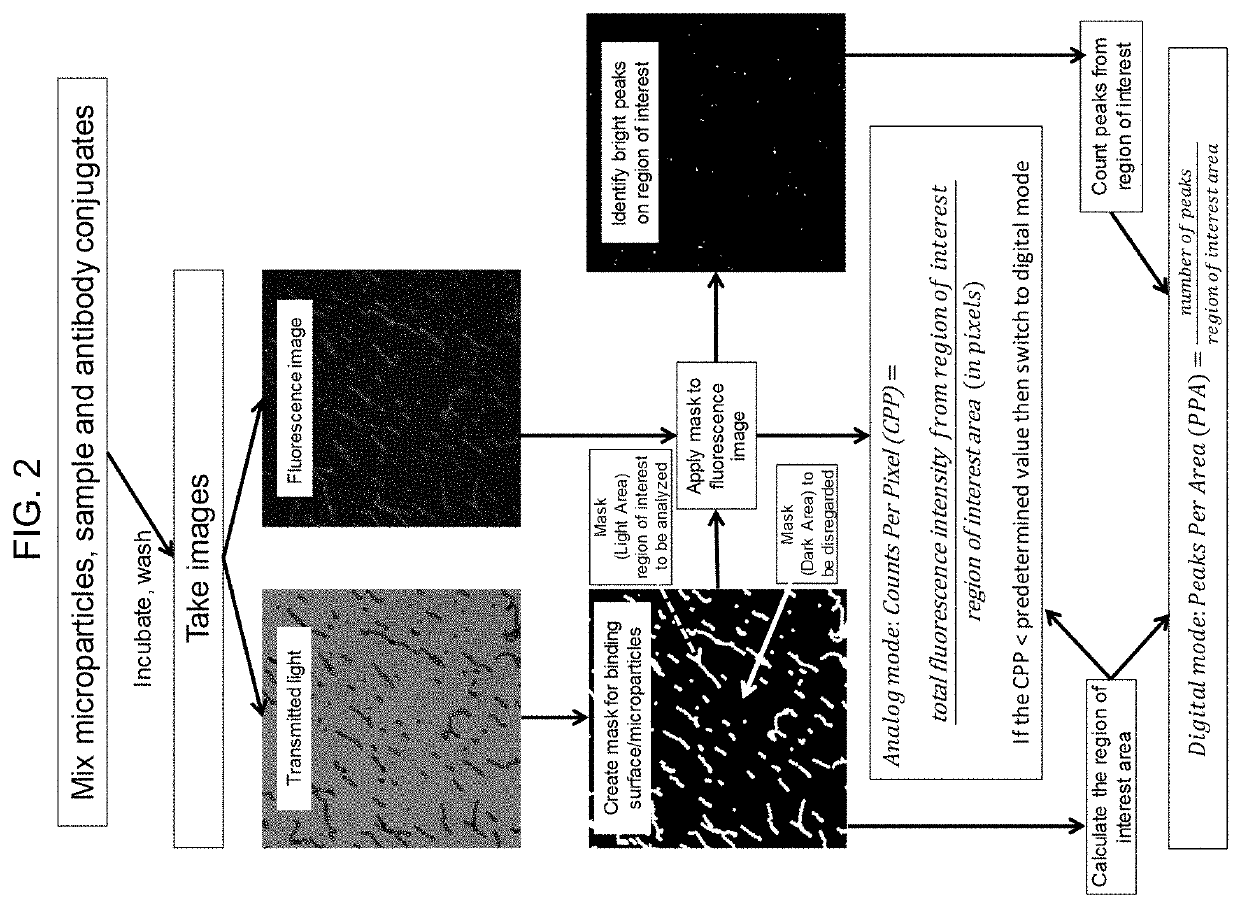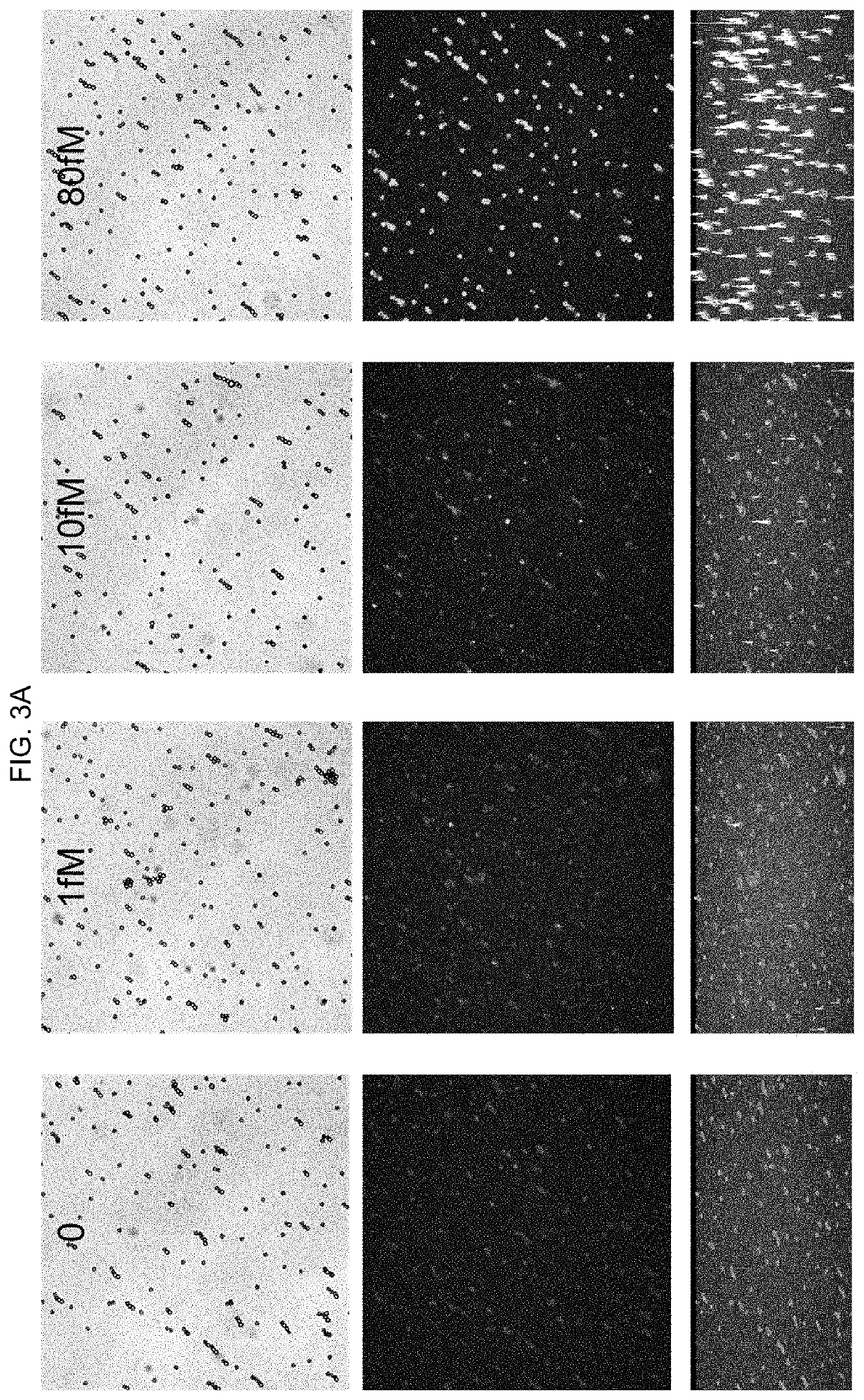Direct detection of single molecules on microparticles
a technology of single molecules and microparticles, applied in the direction of instruments, particle and sedimentation analysis, measurement devices, etc., can solve the problems of cumbersome detection devices, time-consuming, and additional steps and reagents,
- Summary
- Abstract
- Description
- Claims
- Application Information
AI Technical Summary
Benefits of technology
Problems solved by technology
Method used
Image
Examples
example 1
[0110]This example demonstrates a method of analyzing an analyte of interest in a biological sample as disclosed herein.
[0111]It has been shown that a single conventional fluorophore (e.g. fluorescein, rhodamime, etc.) can be detected on a low background surface (e.g., specially treated glass or some polymers) using a total internal reflection fluorescence (TIRF) microscope (Skinner, J. P. and S. Y. Tetin, Microsc Res Tech., 78(4): 309-16 (2015)). However, it is difficult to detect a single conventional fluorophore on a microparticle with a conventional fluorescence microscope due to sensitivity issues and fluorescence background of the microparticles. Thus, detecting a single analyte molecule captured by a microparticle with a fluorescent conjugate requires bright signal-generating molecules (e.g., at least 5 times brighter than background fluorescence). As an alternative to nanospheres, streptavidin-phycoerythrin (SAPE) was tested. Phycoerythrin (PE) is known as the brightest fluo...
example 2
[0116]This example describes an immunoassay to detect HCV antigen in accordance with the methods described herein.
[0117]Microparticles and HCV calibrator from on-market kits (HCV core Ag kit, Ref 6L47-29, and HCV Calibrator set, Ref 6L47-02, respectively, Abbott Laboratories, Abbott Park, Ill.) were diluted with negative human plasma (NHP). Dextran BSA-biotin-Fab clusters were prepared as shown in FIG. 1. Streptavidin phycoerythrin (SAPE, PJR39S) was purchased from Prozyme (Hayward, Calif.).
[0118]The assay was performed in three steps:
[0119]Step 1: 100 μL of the HCV calibrators ranging from 0-20000 fM were first mixed with microparticles. Microparticles were incubated at 37° C. and then washed.
[0120]Step 2: 100 μL Dextran BSA-biotin-Fab clusters were added to microparticles. Microparticles were incubated and then washed.
[0121]Step 3: 100 μL SA-PE was added. Microparticles were incubated, washed, and then imaged on a microscope.
[0122]Imaging and analysis: For each sample, 4-9 sets of...
example 3
[0125]This example describes an immunoassay to detect HIV in accordance with the methods described herein.
[0126]Microparticles used in the assay were coated using an Abbott in-house antibody via EDAC chemistry, and calibrators were prepared from an on-market kit (HIV kit, 25258L100, 65 pg / ml, Abbott Laboratories, Abbott Park, Ill.) and further diluted with negative human plasma (NHP). Dextran BSA-biotin-Fab clusters were prepared. Streptavidin phycoerythrin (SAPE) was purchased from Prozyme (Hayward, Calif.).
[0127]The assay was performed in two steps:
[0128]Step 1: 100 μL of the HIV sample ranging from 0-6.5 pg / ml were first mixed with microparticles, assay specific diluent, and Dextran BSA-biotin-Fab clusters, and microparticles were washed after a 10-minute incubation at 37° C.
[0129]Step 2: 100 μL SAPE was added, microparticles were washed after incubation and then imaged on a microscope with an EM-CCD camera.
[0130]Imaging acquisition and analysis were carried out as described in E...
PUM
 Login to View More
Login to View More Abstract
Description
Claims
Application Information
 Login to View More
Login to View More - R&D
- Intellectual Property
- Life Sciences
- Materials
- Tech Scout
- Unparalleled Data Quality
- Higher Quality Content
- 60% Fewer Hallucinations
Browse by: Latest US Patents, China's latest patents, Technical Efficacy Thesaurus, Application Domain, Technology Topic, Popular Technical Reports.
© 2025 PatSnap. All rights reserved.Legal|Privacy policy|Modern Slavery Act Transparency Statement|Sitemap|About US| Contact US: help@patsnap.com



